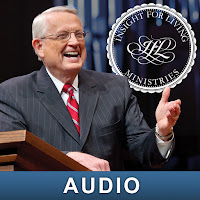 I recently came across an interesting article posted on The Gospel Coalition (TGC) website titled "How Does a Mom Pray as a Calvinist?" In the article, the author Courtney Reissig writes:
I recently came across an interesting article posted on The Gospel Coalition (TGC) website titled "How Does a Mom Pray as a Calvinist?" In the article, the author Courtney Reissig writes:"How does a mom, who believes that God is sovereign over salvation, find any hope for her children? How does she not live in fear about the state of their souls every day? If only those chosen by God find eternal life in him, can she sleep at night if none of them has yet professed faith?
In a recent interview about Calvinism, Andy Stanley—senior pastor of North Point Community Church in Atlanta—posed several questions as he critiqued Calvinism from several angles. In one particular segment, he talked specifically about women, and from his vantage point women are less vocal about their belief in God’s sovereignty in salvation because of how harsh it sounds (to him). Mothers, he said, would have a hard time reconciling their maternal instinct to protect, care for, and provide for their child with a view of salvation that, as he sees it, provides little assurance that they will be saved."1
In response to Courtney Reissig's questions (and her Calvinistic views), I think the following statement is very good:
"There is no limitation, but your own rejection of it, to that Divine yearning desire according to which He willeth not the death of a sinner, but rather that they would turn from their evil ways and live [Ezek. 18:23, 33:11]. Is there a child, O ye mothers and fathers, whom ye unconditionally hate and doom to destruction? Not one. And can ye suppose that ye are kinder and better than your God?"2
There is also much to be learned on the topic of divine election from the following dialogue between D. L. Moody and Rev. Marcus Rainsford (excerpted from the book Sovereign Grace by D. L. Moody):
Mr. M. -- Suppose a man say he is not "elected?"
Mr. R. -- Do you remember the story of the woman of Canaan? Poor soul; she had come a long journey. She asked the Lord to have mercy on her afflicted child. He wanted to try her faith, and He said: "I am not sent but to the lost sheep of the house of Israel." [Matthew 15:24] That looked as if He Himself told her that she was not one of the elect. But she came and worshipped Him, saying, "Lord, help me!" and He helped her there and then. No; there is no election separating between the sinner and Christ.
Mr. M. -- Say that again.
Mr. R. -- THERE IS NO ELECTION SEPARATING BETWEEN THE SINNER AND CHRIST.
Mr. M. -- What is there between the sinner and Christ?
Mr. R. -- Mercy!! Mercy!!
Mr. M. -- That brings me near to Christ.
Mr. R. -- So near that we cannot be nearer. But we must claim it. In John [6:39-40] we get God's teaching about election. "This is the Father's will which hath sent Me, that of all which He hath given Me I should lose nothing; but should raise it up again at the last day." He will do his work, you may depend upon it. Then in the next verse we read: "And this is the will of Him that sent Me, that every one which seeth the Son, and believeth on Him, may have everlasting life: and I will raise him up at the last day." That is the part I am to take: and when I have done so I shall know the Father's will concerning me.3
ENDNOTES:
1 Courtney Reissig, "How Does a Mom Pray as a Calvinist?" The Gospel Coalition website (December 22, 2018).
2 James Morison, "THE GOSPEL AS PREACHED BY DR. MORISON," p. 284. The Evangelical Repository: A Quarterly Magazine of Theological Literature. EIGHTH SERIES. VOL. III. GLASGOW: 1885.
3 D. L. Moody, Sovereign Grace, pp. 117-118, emphasis his.
1 Courtney Reissig, "How Does a Mom Pray as a Calvinist?" The Gospel Coalition website (December 22, 2018).
2 James Morison, "THE GOSPEL AS PREACHED BY DR. MORISON," p. 284. The Evangelical Repository: A Quarterly Magazine of Theological Literature. EIGHTH SERIES. VOL. III. GLASGOW: 1885.
3 D. L. Moody, Sovereign Grace, pp. 117-118, emphasis his.
















